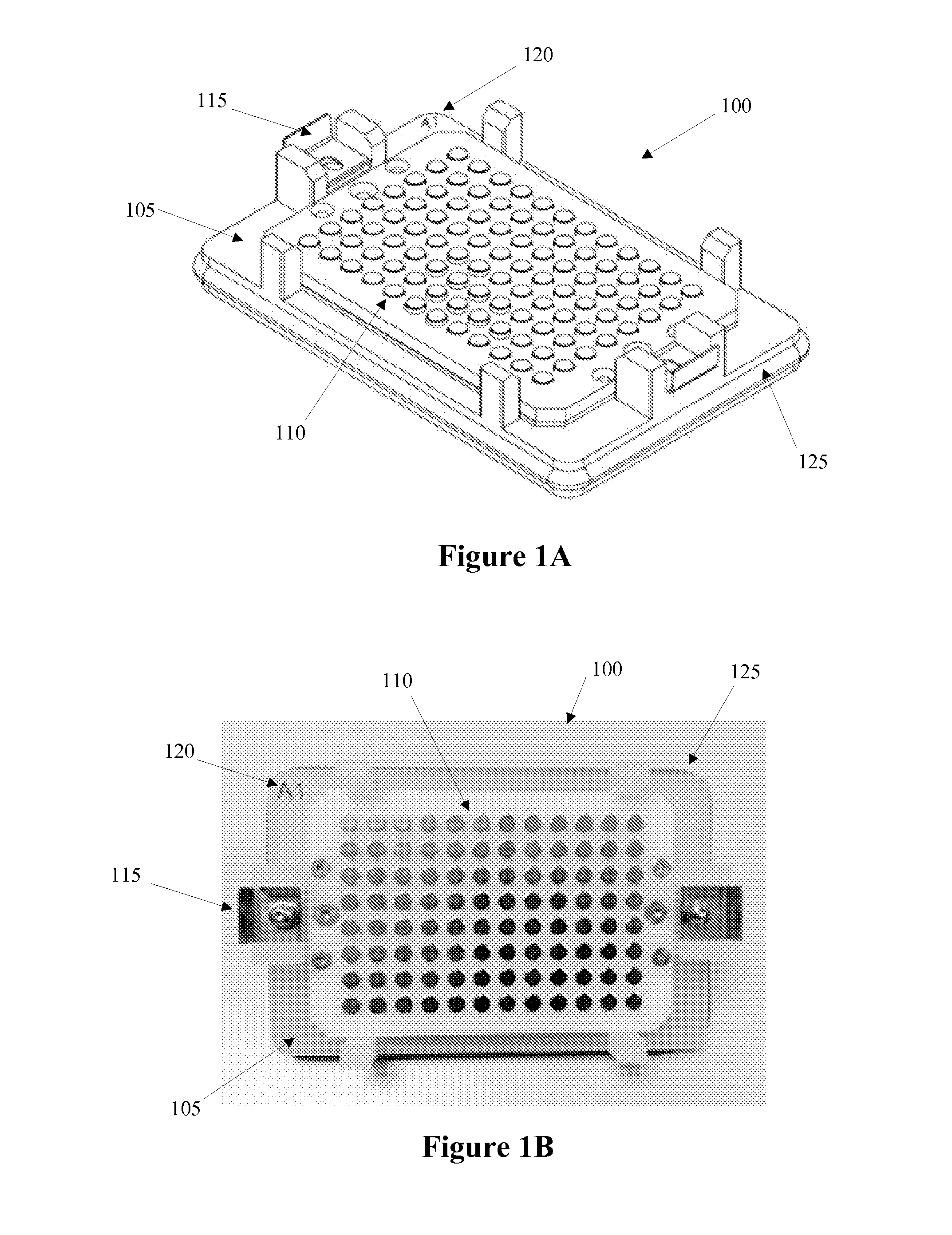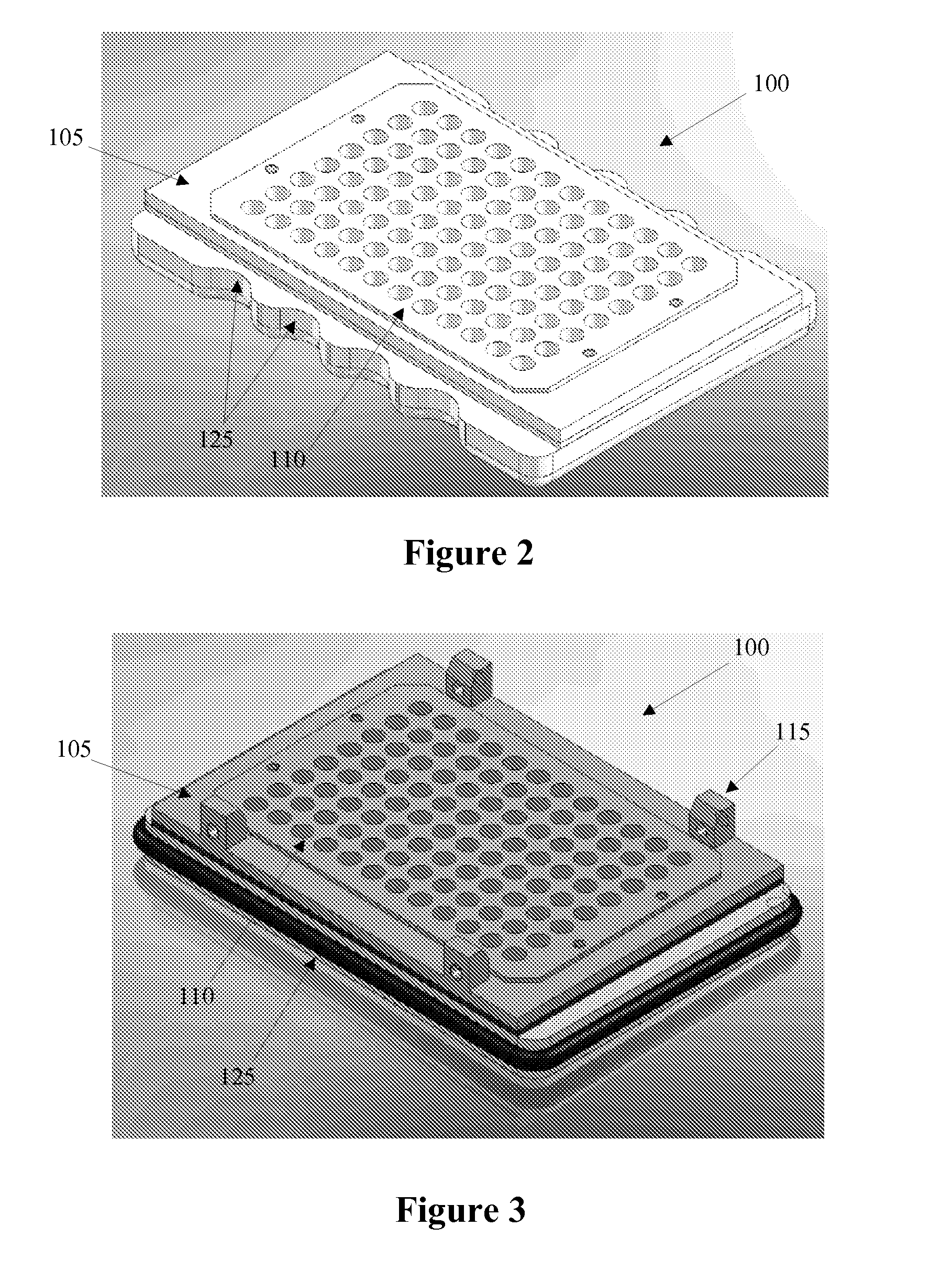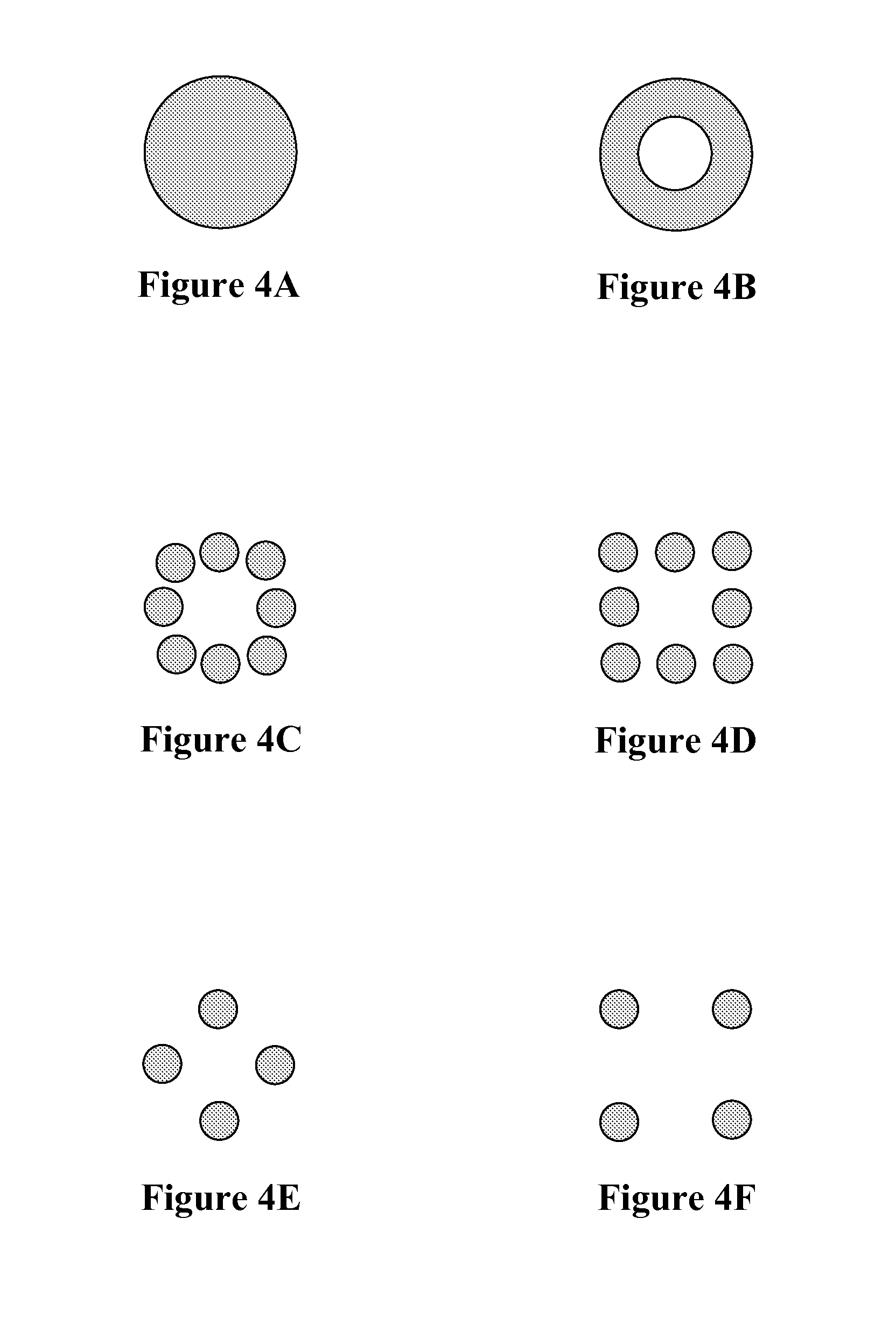Devices, Systems and Methods for Processing of Magnetic Particles
a magnetic particle and fluidic technology, applied in the field of fluidic processing of magnetic particles, can solve the problems of less uniform distribution of magnetic particles, less efficacy and efficiency of fluidic steps such as washing, and irregular clumps of magnetic particles, so as to achieve uniform and consistent magnetic particle distribution, improve the effect of fluidic processing efficiency and efficiency, and improve the effect of magnetic field uniformity
- Summary
- Abstract
- Description
- Claims
- Application Information
AI Technical Summary
Benefits of technology
Problems solved by technology
Method used
Image
Examples
example 1
[0088]A hand held magnetic processing device is used within the QUANTIGENE® Plex (Affymetrix, Inc., Santa Clara, Calif.) assay configured for magnetic separation as per the instructions listed below. In this example, the processing device is a magnetic plate washer, the container is a 96 flat bottom well microtiter plate, and the magnetic particles are magnetic capture microspheres. The magnetic plate washer is used with the 96 flat bottom well microtiter plate to enable quick and easy processing of the washing steps after each incubation within the assay. The operating instructions below apply to each wash step that was required in the QUANTIGENE® Plex assay, starting with the wash step after the overnight hybridization step captures the RNA.
Before Using the Hand Held Magnetic Plate Washer
[0089]Step 1. Set up the LUMINEX® (Austin, Tex.) instrument according to manufacturer's published protocols.
[0090]Step 2. Define a protocol with the appropriate microsphere regions and set to read...
example 2
[0117]A hand held magnetic processing device is also used with the PROCARTA® Cytokine assay (Affymetrix, Inc., Santa Clara, Calif.) as per the instructions listed below. In this example, the hand held magnetic device is a hand held magnetic plate washer, the container is a 96 flat bottom well microtiter plate, and the magnetic particles are magnetic microspheres conjugated with antibodies.
[0118]Step 1. Collect and prepare samples, antigen standards, and 1× wash buffer.
[0119]Step 2. Add magnetic microspheres conjugated with antibodies in buffer. Place the microtiter plate on the hand held magnetic plate washer. Add the wash buffer to the wells of the microtiter plate. Invert the assembly over an appropriate receptacle and expel the buffer. Firmly tap the inverted plate on a clean paper two to dry. Remove the microtiter plate from the hand held magnetic plate washer such that the magnetic microspheres are free to move around in the wells.
[0120]Step 3. Add samples / standards. Incubate 6...
PUM
| Property | Measurement | Unit |
|---|---|---|
| diameter | aaaaa | aaaaa |
| temperature | aaaaa | aaaaa |
| temperature | aaaaa | aaaaa |
Abstract
Description
Claims
Application Information
 Login to View More
Login to View More - R&D
- Intellectual Property
- Life Sciences
- Materials
- Tech Scout
- Unparalleled Data Quality
- Higher Quality Content
- 60% Fewer Hallucinations
Browse by: Latest US Patents, China's latest patents, Technical Efficacy Thesaurus, Application Domain, Technology Topic, Popular Technical Reports.
© 2025 PatSnap. All rights reserved.Legal|Privacy policy|Modern Slavery Act Transparency Statement|Sitemap|About US| Contact US: help@patsnap.com



